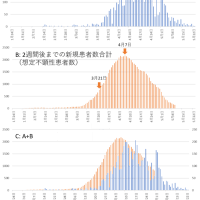A venous-specific purinergic signaling cascade initiated by Pannexin 1 regulates TNFα-induced increases in endothelial permeability
A challenge in treating sepsis, a potentially life-threatening, systemic inflammatory disorder, is the increase in endothelial permeability that leads to widespread tissue edema and immune cell infiltration. Maier-Begandt et al. uncovered a signaling pathway activated specifically in veins by TNFα, a proinflammatory cytokine whose circulating concentrations increase greatly during sepsis. TNFα treatment resulted in the activation of Panx1 channels, which stimulated a signaling pathway that led to disrupted tight junctions in veins but not in arteries. Sepsis induced less lung edema and was less fatal to Panx1-deficient mice compared to control mice. Thus, targeting this pathway may improve survival in patients experiencing sepsis. The endothelial cell barrier regulates the passage of fluid between the bloodstream and underlying tissues, and barrier function impairment exacerbates the severity of inflammatory insults. To understand how inflammation alters vessel permeability, we studied the effects of the proinflammatory cytokine TNFα on transendothelial permeability and electrophysiology in ex vivo murine veins and arteries. We found that TNFα specifically decreased the barrier function of venous endothelium without affecting that of arterial endothelium. On the basis of RNA expression profiling and protein analysis, we found that claudin-11 (CLDN11) was the predominant claudin in venous endothelial cells and that there was little, if any, CLDN11 in arterial endothelial cells. Consistent with a difference in claudin composition, TNFα increased the permselectivity of Cl− over Na+ in venous but not arterial endothelium. The vein-specific effects of TNFα also required the activation of Pannexin 1 (Panx1) channels and the CD39-mediated hydrolysis of ATP to adenosine, which subsequently stimulated A2A adenosine receptors. Moreover, the increase in vein permeability required the activation of the Ca2+ channel TRPV4 downstream of Panx1 activation. Panx1-deficient mice resisted the pathologic effects of sepsis induced by cecal ligation and puncture on life span and lung vascular permeability. These data provide a targetable pathway with the potential to promote vein barrier function and prevent the deleterious effects of vascular leak in response to inflammation.





















※コメント投稿者のブログIDはブログ作成者のみに通知されます